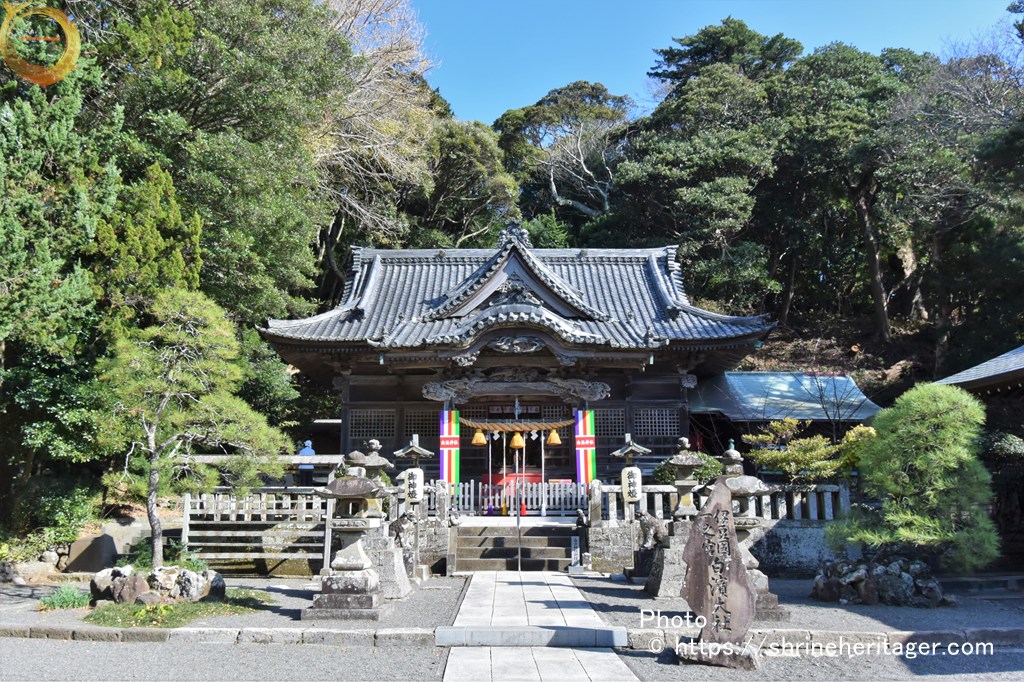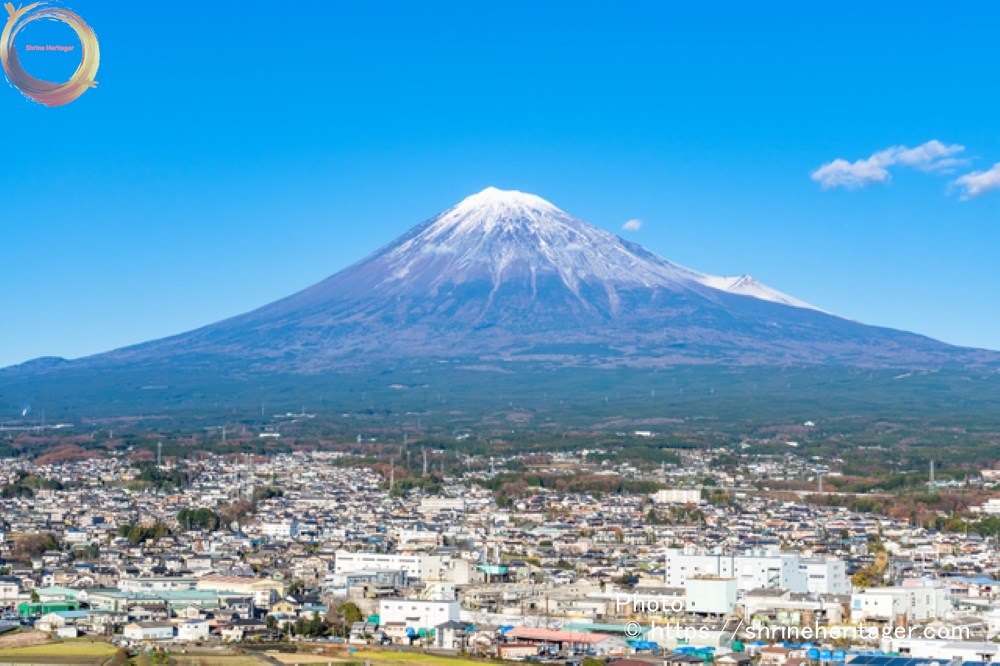Ikonahime no mikoto shrine, according to the good luck of the shrine, "This god is transferred here from Miyakejima, and it will be transferred to Mishima later", and the pioneer god of izu islands "Mishima-jin - Mishima-jin" and the empress god "Ikonabi咩" The hill "hitachiyama" on the Shirahama coast of the jinzachi area is a ritual site that enshrines the Izu Islands since ancient times, but the rituals of Ikonabi 咩 Meise Shrine are still continuing.
目次
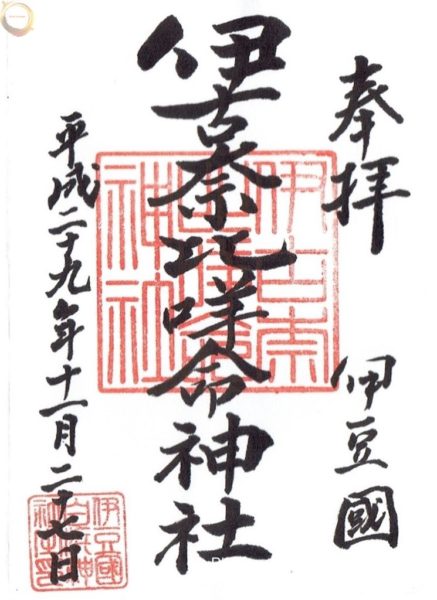
1.ご紹介(Introduction)
The official name of this shrine and how to be called The present address and map I will introduce the history of the god and the shrine enshrined.
【神社名(shrine name)】
Ikonahime no mikoto shrine (ikonamime no mikoto
shrine)(Ikonahime Mikoto Kojija) (いこなひめのみことじんじゃ)
[通称名(Common name)]
Shirahama Shrine
【鎮座地 (location) 】
Shirahama 2740, Shimoda City, Shizuoka Prefecture
[地 図 (Google Map)]
【御祭神 (God's name to pray)】
《主》伊古奈比咩命(ikonahime no mikoto)(The After-The Great God of Mishima)
Mishima Daimyojin
見目(mime)(Goddess, God of Mishima Daimyoji)
若宮(wakamiya) (TheGod of Mishima Daimigami)
剣ノ御子(tsurugi no miko) (tsurugi no miko)(The God of Mishima Daimigami)
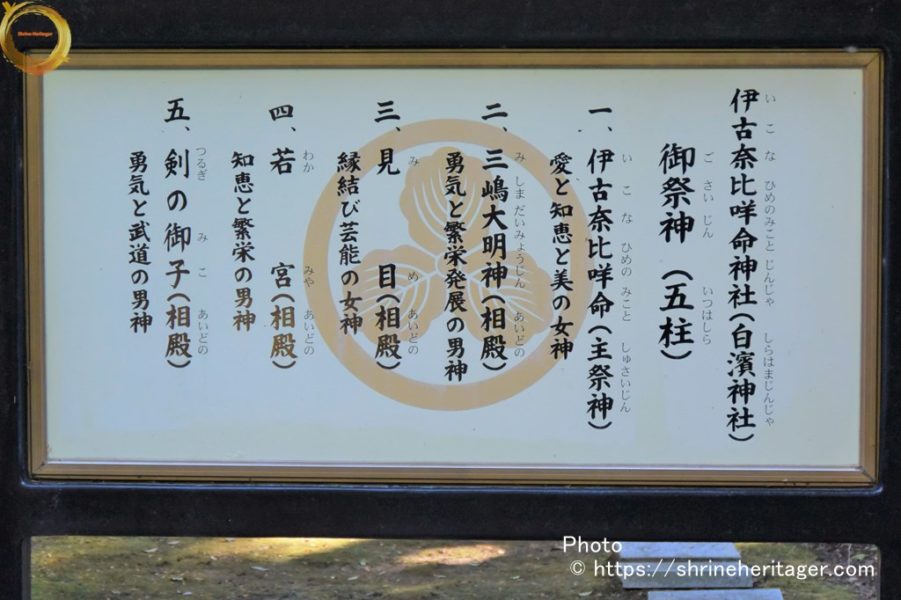
【御神格 (God's great power)】
・八方厄除 Pray in every direction, except for trouble
・縁結び Deepen connections and intimacy with people
・海上安全 Maritime safety
・大漁満足 Good harvest and big catch
・商売繁盛 Wishing business prosperity
・安産 Healthy childbirth
・交通安全 Pray for Traffic safety
・家内安全 Safe and comfortable home life
・等etc
【格 式 (Rules of dignity) 】
・『延喜式神名帳(engishiki jimmeicho)』所載社 名神大社
・ 別表神社
【創 建 (Beginning of history)】
According to the good luck of Shirahama Shrine, in the 6th year of Emperor Takayasu, "This god is transferred here from Miyakejima, and later it will be transferred to Mishima" and it is said that the god who came from the island was enshrined.
2,400 years ago, The God of The Festival, Mishima Daimigami, landed on Shirahama in Izu, riding the Kuroshio from the south with his eyes, Wakamiya, and the Son of the Sword.
It is a god who handed over the land of Izu from the great god of Fuji, received Ikona Himei as a empress from Shimogamo of Minami Izu, settled in Shirahama, and later built Izu Nanashima.
From the official website of Shizuoka Shrine Agency
【由 緒 (history)】
Mishima Ogami (also known as the lord god) of the festival of IIkonahime no mikoto Shrine was a long time ago (more than 2,000 years ago. I came to Izu across the sea from the south.
The because this white sand beach was too beautiful that I arrived at this shirahama especially in Izu.
Mishima Ogami, who arrived at Shirahama, met the god of Mt. Fuji, the landowner of Izu, and handed over the land of Izu.
In addition, Mishima Ogami started to burn the island, or build an island, with the help of the god of the companion, the god of Wakamiya, the son of the sword, the dragon god of Izu, the sea god, and the thunder god because the land of Izu was small.
First, we built a small island one night a day.
Because it is the first island, I named it Hatsushima.
Next, Shima jinshujima (present-day Kozushima) where gods gather and consult,
Oshima, then on a big island,
Next, Niijima made white with sea salt,
Next, the sight of the attendant, Wakamiya, the island that makes the house of the son of the sword, Miyakejima,
Next, Mikurajima to put the storehouse of Mishima Ogami,
Then the island off the coast, towards the offing,
Then a small small island,
Next, Wang's nose island, like the nose of the tengu
Finally, we created the tenth island, Jujima (present-day Rishima).
Mishima Ogami, who created 10 islands in 7 days, placed a empress on the islands and created a child.
These empresses and children are still enshrined as Shikiuchisha on the islands of Izu. Mishima Ogami loved the empresses and their children very much, but among them, Ikonahime no mikoto life was especially loved, and he was always close to Mishima Ogami.
Ogami built a shrine on Miyake jima island and stayed in Miyakejima for a while, but later came back to Shirahama with his beloved empress, Ikonahime no mikoto, the life and attendant's appearance, Wakamiya, and the son of the sword.
And, a big company was built in this Shirahama, and it lived in this beautiful Shirahama for a long time. That is the Life Shrine Ikonahime no mikoto.「全国神社祭祀祭礼総合調査(平成7年)」[神社本庁]
【境内社 (Other deities within the precincts)】
・二十六社神社(nijuroku sha shrine)
(At the time of Sengu in 1921, 26 shrines were enshrined in one company.)
It was originally enshrined as a clan god in each house of the company house.)
1.Shohiko Meimei Shrine 2.Miko Shrine 3.Ojin Emperor's Shrine 4.Susanoo Mei Shrine 5.Tenji Roof Life Shrine
6.Ten-Moisture Life Shrine 7.Amaterasu-kodai Shrine 8.Class Nagatobe Shrine 9.Kihana Saki Yahime Mei Shrine 10.Seorizu Himemei Shrine
11.Kurainatamamei Shrine 12.Toyouki Hi-Seimei Shrine 13.Keitsu Main Life Shrine 14.Kumano Shrine 15.Kaitsumi Shrine
16.Kaizu Toyotamahiko Shrine 17.Dainen Shrine 18.Ishinaga Hieimei Shrine 19.Wakamiya Shrine 20.Hai Shrine
21.Dairai Shrine 22.Takako-san Rei Shrine 23.Kanayama Bikomei Shrine 224.Kanayama Hi-Life Shrine 25.Oyama-gion Shrine
26.Toyoto Grand Shrine
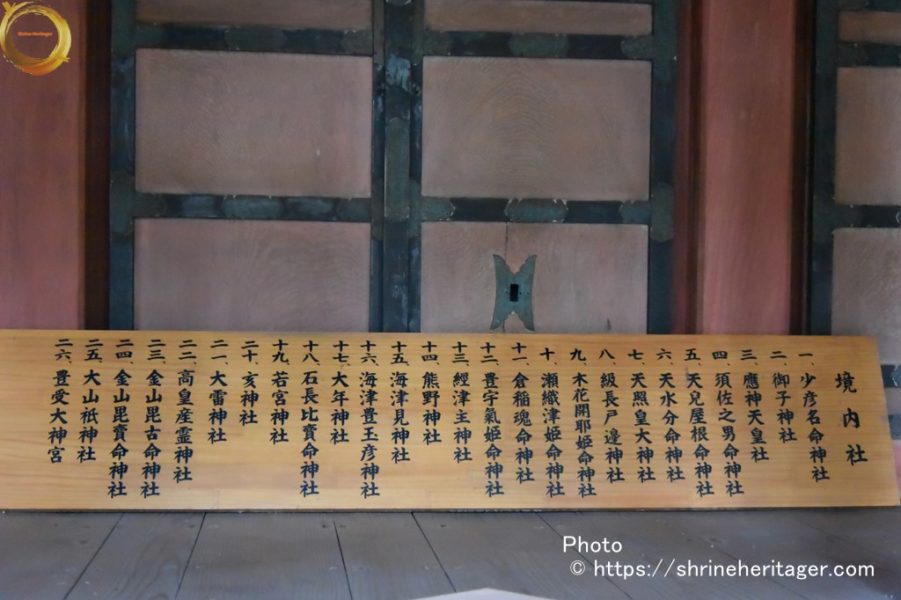
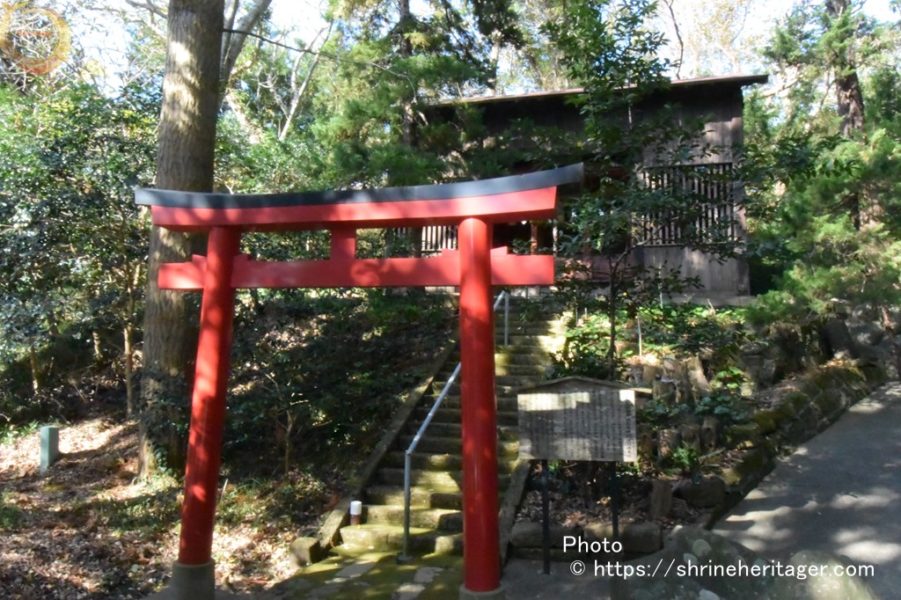
Sunamura Inari Shrine

Eye shrine
《主》目大神
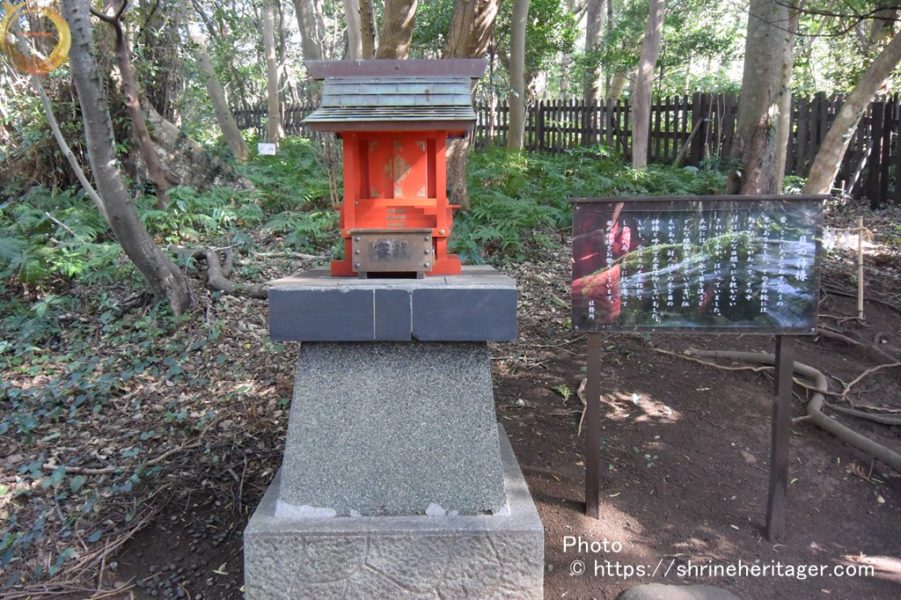
・見目弁財天社(mime benzaiten)
《主》見目神(mime no kami)

Sakaigai Suesha (Ikonabi咩 is said to be the former zaza of The Meise Shrine (Shirahama Shrine))
・十二明神社(juni myojin sha)
《主》大楠命・小楠命・御代徳命・感農八甕命・横池命
Ikanmei, Chiumei, Okenmikomei, Okenbimei, Mita no No mei
・伊豆奈比咩命・穂便感応命
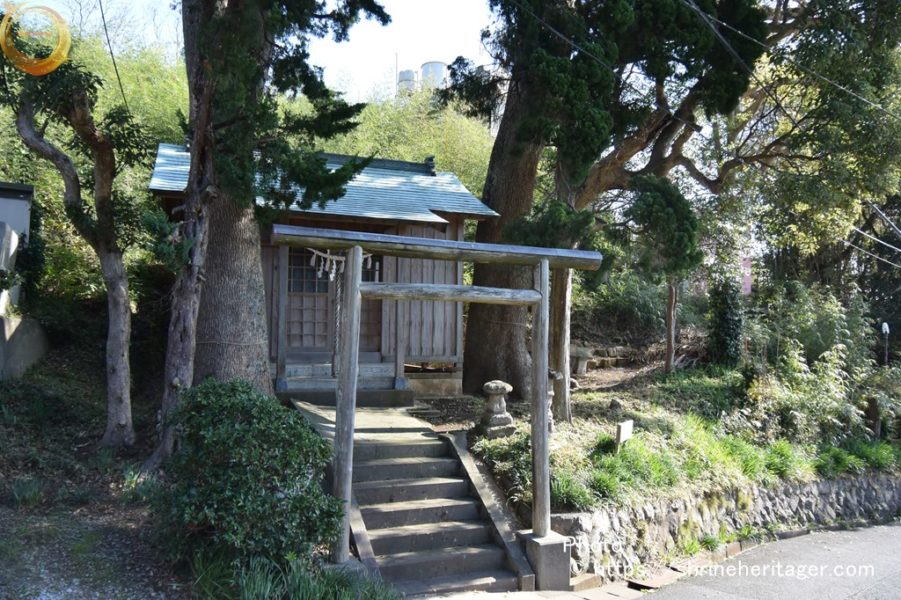
スポンサーリンク
この神社の予備知識(Preliminary knowledge of this shrine)
This shrine has a long history.
『延喜式神名帳(engishiki jimmeicho)The two volumes that are regarded as important among all 50 ritual- style scrolls created by the Imperial Court during the middle Heian period are called " engishiki jimmeicho " (edited in December 927). Approximately 1100 years ago, the name of "2861 company" and the number of gods enshrined there are listed in the list of government offices (shikinaisha) nationwide.
【延喜式神名帳】(engishiki jimmeicho)The shrine record was completed in December 927 AD.
[旧 行政区分](Old administrative district)
(神様の鎮座数)東海道 731座…大52(うち預月次新嘗19)・小679
[旧 国 名 ](old county name)
(神様の鎮座数)伊豆国 92座(大5座・小87座)
[旧 郡 名 ](old region name)
(神様の鎮座数)賀茂郡 46座(大4座・小44座)
[名神大 大 小] Ceremony Meishin Taisha式内 名神大社
[旧 神社名 ] 伊古奈比咩命神社(名神大)
[ふ り が な ](いこなひめのみことの かみのやしろ)
[How to read] (ikonahime no mikoto no kamino yashiro)
https://www.digital.archives.go.jp/DAS/meta/listPhoto?LANG=default&BID=F1000000000000004146&ID=M2014101719562090086&TYPE=&NO=画像利用
国立国会図書館デジタルコレクション 延喜式 刊本(跋刊)[旧蔵者]紅葉山文庫
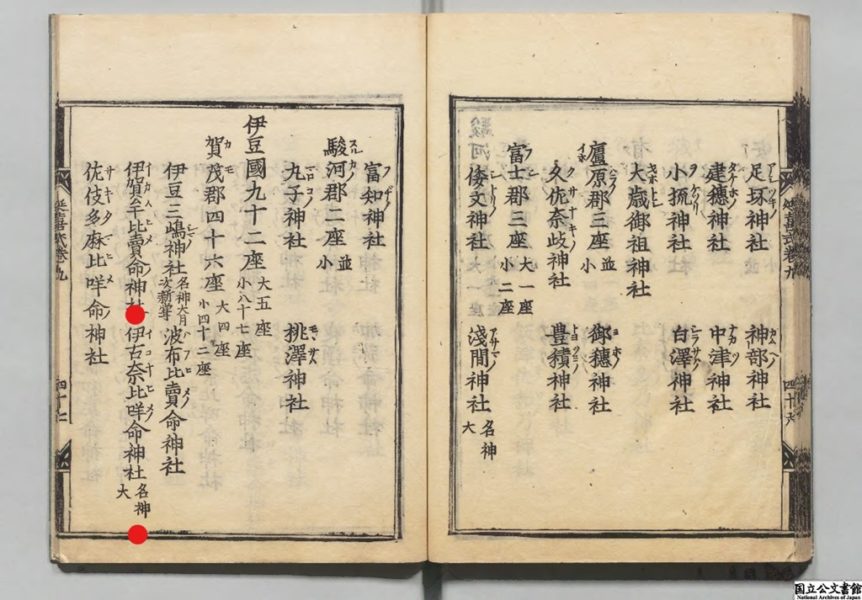
[Otaky Point] (Points Selected by Japan Otaku)
I will introduce the preliminary knowledge that you will be interested in this shrine from a otaku's point of view.
About "12 Ming Shrine", the former jinzachi of Ikonahime no mikoto (Shirahama Shrine)
・十二明神社(juni myojin sha)
《主》大楠命・小楠命・御代徳命・感農八甕命・横池命
・伊迦命・知宇命・尾健御子命・尾健比命・見多諾命
・伊豆奈比咩命・穂便感応命
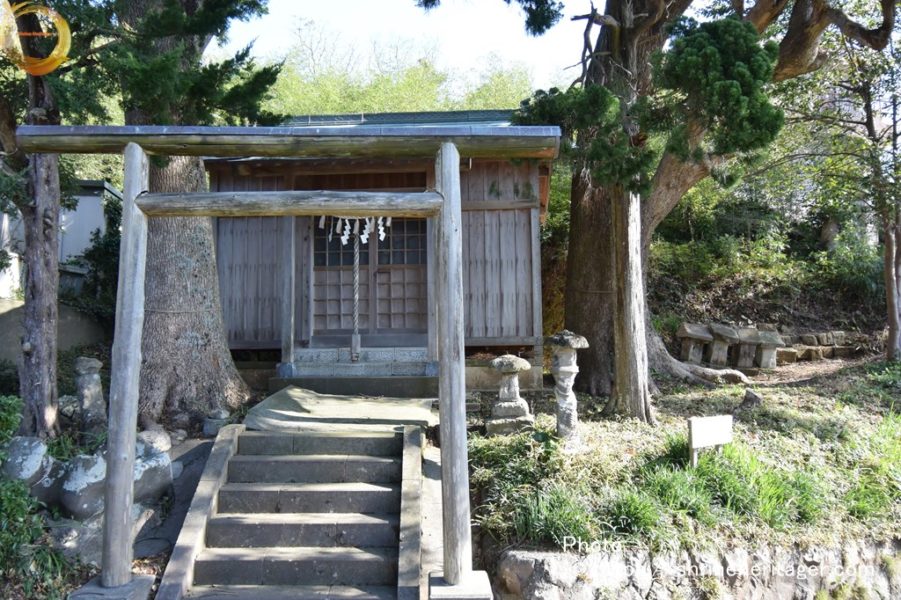
The location of "12 ming Shrine" which is said to be the former jinzachi of Ikonahime no mikoto (Shirahama Shrine)
It is the "land of kami ake" northwest of Ikonahime no mikoto Shrine (Shirahama
Shrinefrom R135, and going up the narrow road in front of Shimoda Prince Hotel, it sits on the right side and it is sitting on the right side about a 7 minute walk from Shirahama Shrine.
Map of The Sing
It is now a
border-ending company. It is said to be the former zazachi "kami ake" of Ikonahime no mikoto Shrine (Shirahama Shrine).
See the 国立国会図書館デジタルコレクション『伊古奈比咩命神社』出版昭和18参照
https://dl.ndl.go.jp/info:ndljp/pid/1123608https://dl.ndl.go.jp/info:ndljp/pid/1123608p138-p139 as follows:
"Well, I think that it is good to believe not only from the legend but also from the monument and others which remain in the ruins that the first seat in Shirahama was the land of the shinmei.
That is, this place is about at the foot of the rooster of Mt. Takane, and it is located in the place facing one valley which enters the bay from the north of the present company land, and there is a place where the place name of the kagura hall, The Mitarai, etc. is actually located in the same place elementary school, and there is a field and the place where the person of the field and the repellent clothes who do not apply fertilizer in fear of the present god and the person of the repellent clothes do not apply.
The name of "Shinmei Kamiike" is the same as "Miyake", and even if it is not possible to affirm all the consideration that it has the relation with Mishima Shin, it will not be an estimate that should be thrown away by all."
On the God of Festival at The Twelve-Year-High Shrine (Shirahama)
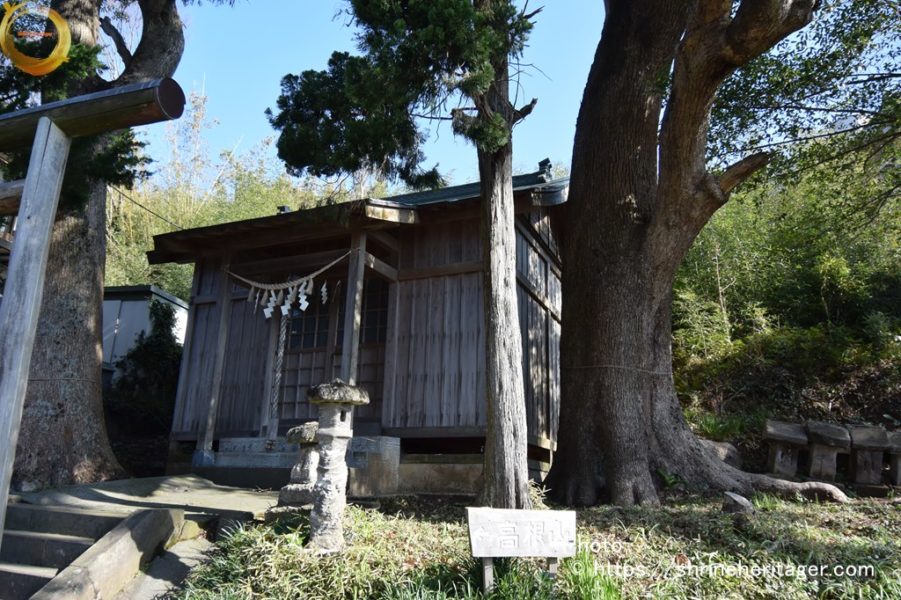
国立国会図書館デジタルコレクション『伊古奈比咩命神社』出版昭和18参照 https://dl.ndl.go.jp/info:ndljp/pid/1123608 written in p138 to p139
"I enshrined the gods who were sitting around kami ake (kagura, forest, Shinmei, Mitarai, etc.), but the name of the shrine is also very special, and it is consistent with the Setsue of Mishima Taisha in the family god of The Mishima God which looks like Miyakeki."
For this reason,
the company magazine believes that this is equivalent to the former zaza of Mishima-jin (Mishima Taisha). As another theory, there is also a tradition that the local "the land of kami ake" is used as a seating ground of "Mishimajin, Ikonahime no mikoto" before Tencho 9 (832).
Moreover, twelve companies with a very deep relation with the head office are enshrined in the last shrine in the place called Shinmei which is said to be an old company site of the head office though it is a non-border land. The twelve companies are on the left.
大楠命、小楠命、御代徳命、感農八甕命、横池命、 伊迦命、知宇命、尾健御子命、尾健比命、見多諾命神社、伊豆奈比命、穂便感應命、From Shirahama Shrine precincts guide board
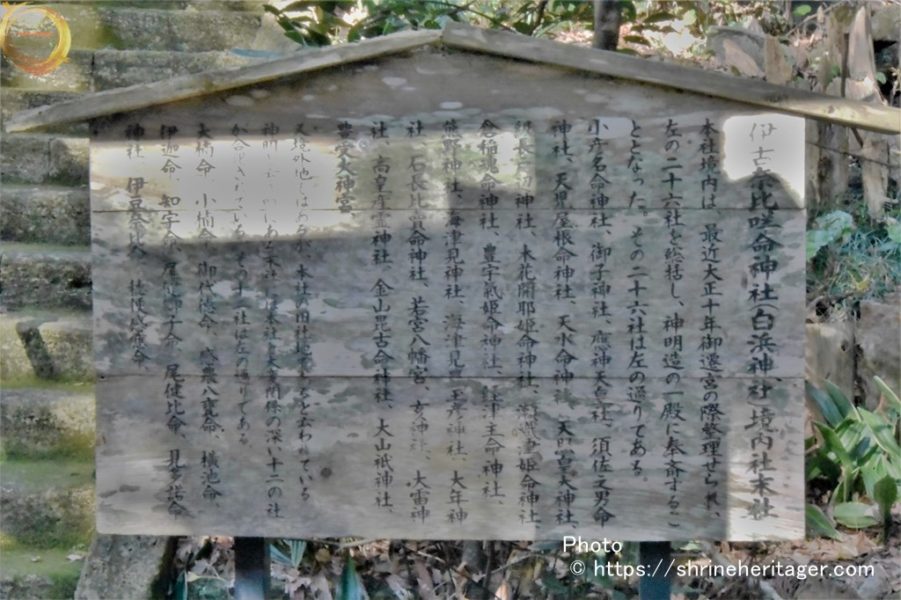
スポンサーリンク
Visit the Shrine (Pray at the Shrine)
I introduce the state when I visited this shrine.
About 5.5km from Izukyu Shimoda Station via R135 About 5.5km by car About 15 minutes
by car Along R135, there is a red drum bridge hanging over the Miyamae River at the head of the company.
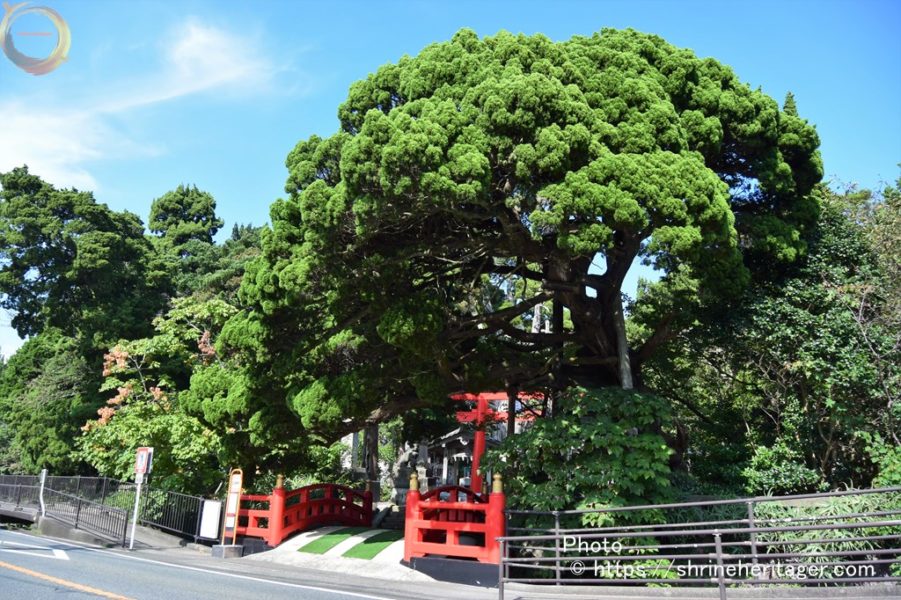
There is not "Monkaburi Matsu" but "The old tree of The Gate Kaburi Kashiwa(Biyakushin)" and I feel the history only by this.
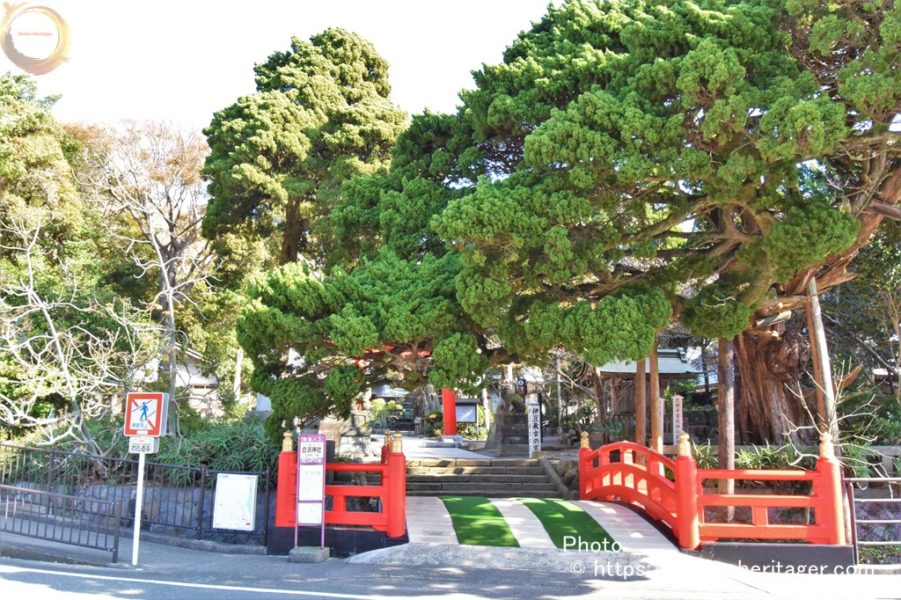
Arrival at Ikonahime no mikoto Shrine (ikonamin no mikoto shrine)
When you cross the bridge, you will find a vermillion torii gate.
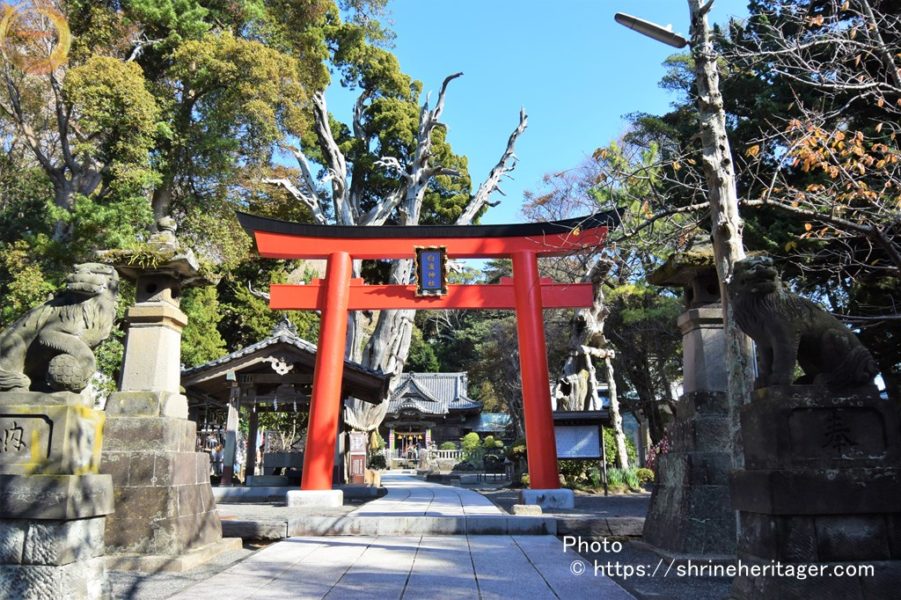
In the guide in front of the right hand side, it is written "Izu's oldest shrine" in the back of the Komainu
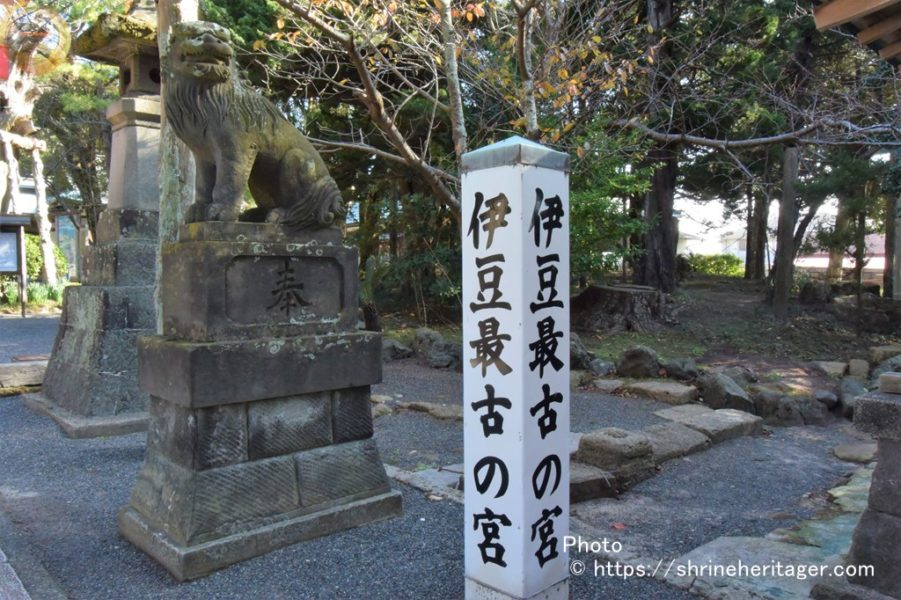
On the left, there is a company title "Shikiuchi Taisha Ikonahime no mikoto Shrine" next to the Shiba Inu
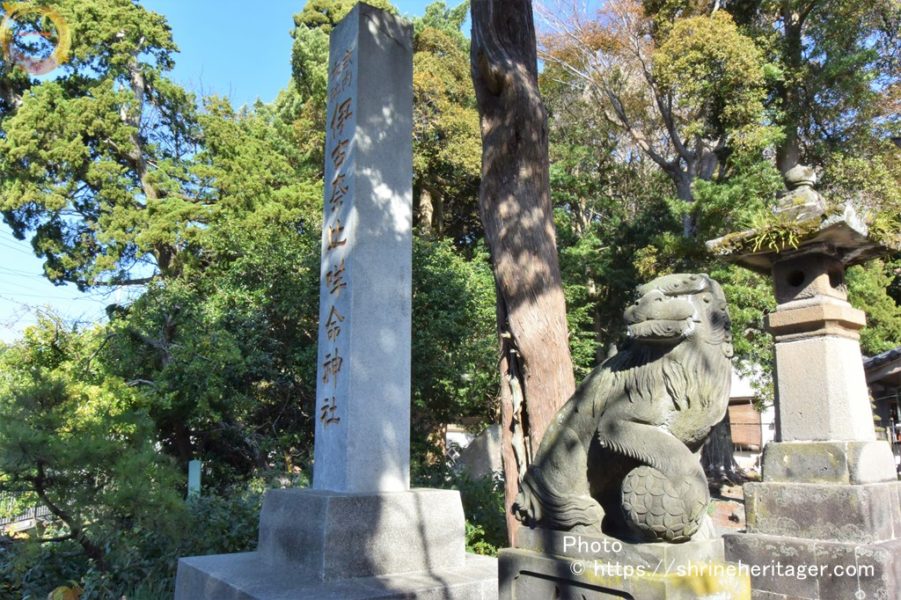
Because it sits in Shirahama, its
common name is Shirahama Shrine. There is "Shirahama Shrine" in the flat forehead of the red torii gate.
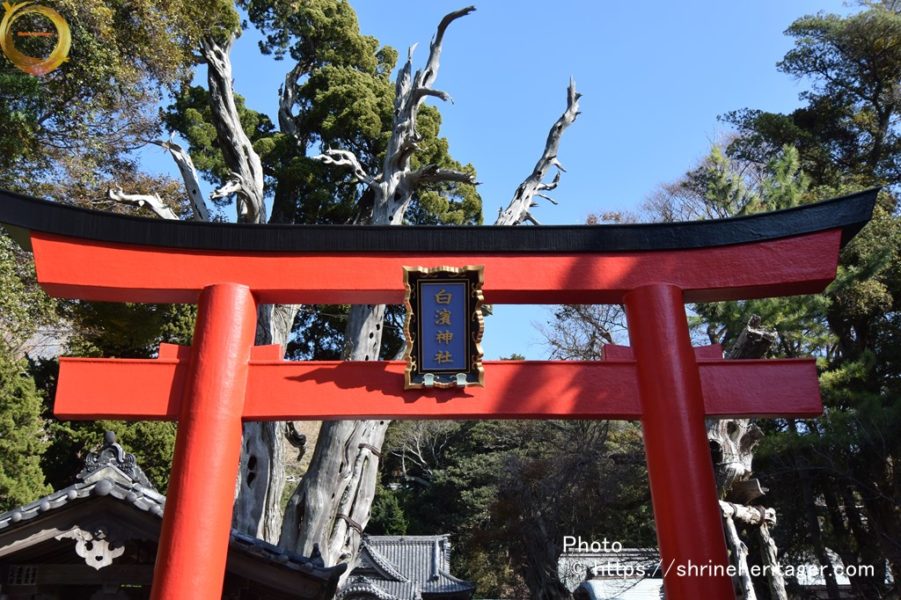
The stone-paved approach continues to
swell from side to side. Bow through the torii gate.

There's a temizusha on your left hand, and it cleanses you.
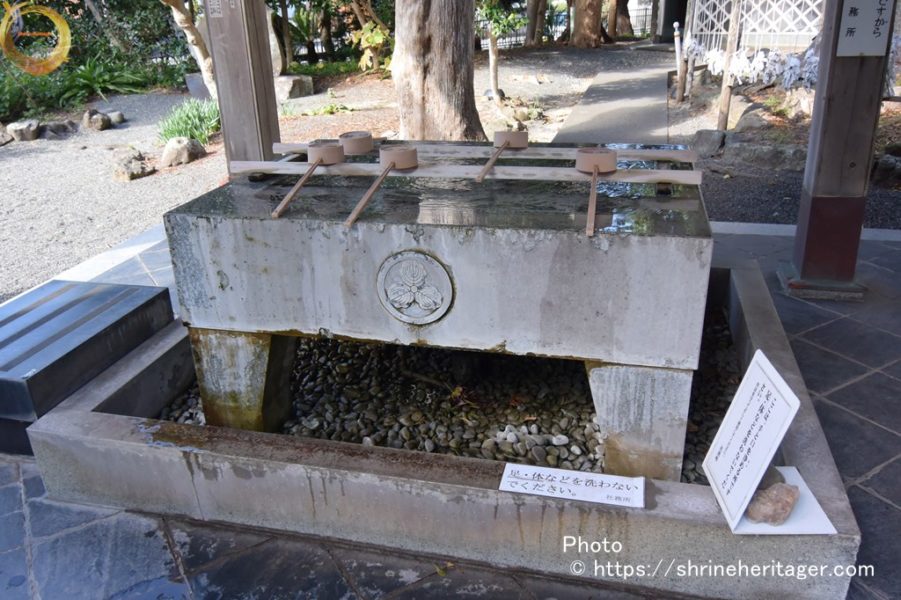
On the right hand side of the approach, it's
been a thousand and three hundred years since it withered. On the left hand side of the approach, there is a 2,000-year-old "Yakushi no Yakusin" where a statue of a pharmacist is enshrined in a cave.
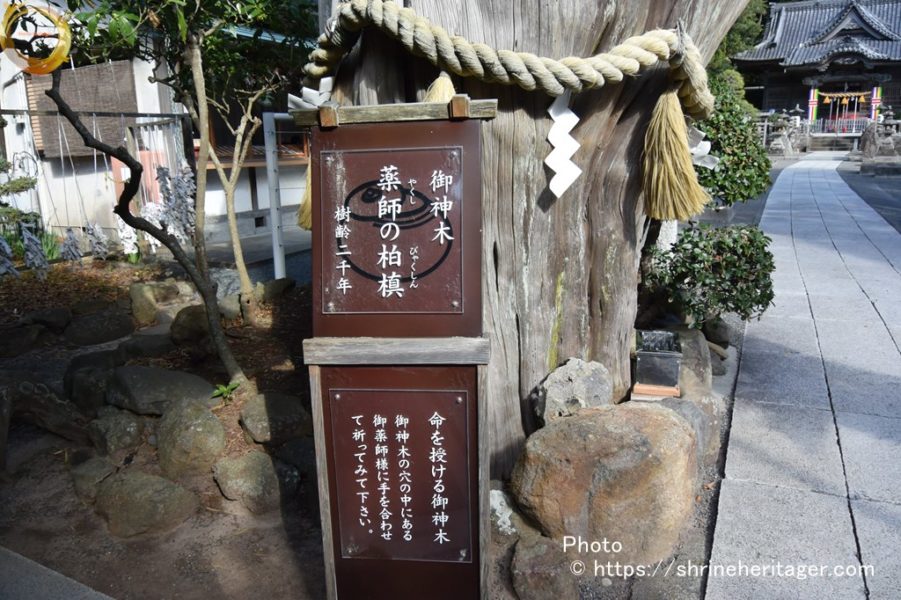

On the right hand side of the large precinct, there is a shrine in the back of the office.
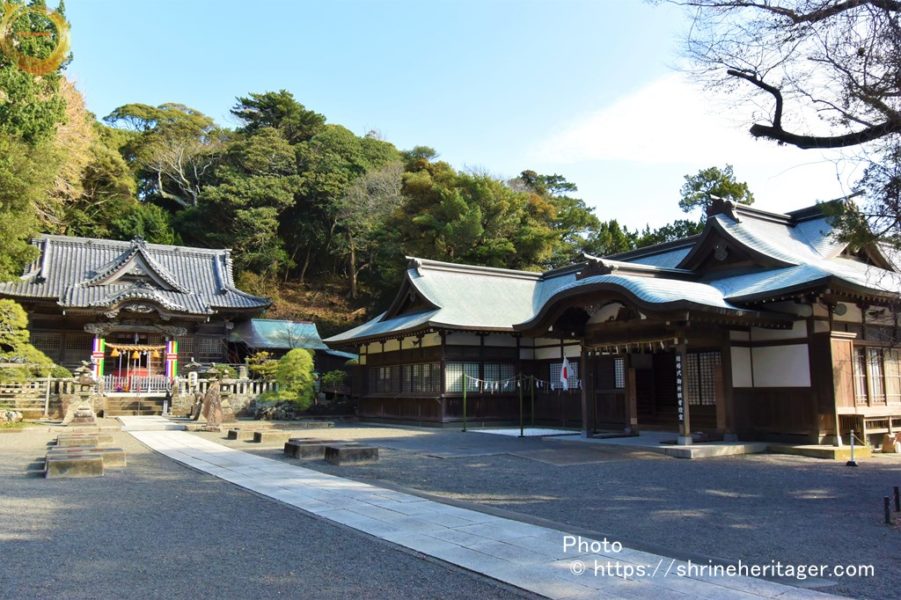
I visit the shrine on the left side of the precincts.
・見目弁財天社(mime benzaiten)
《主》見目神(mime no kami)
It is said to be a marriage shrine, and it is said that it is the god of Mishima Ogami.
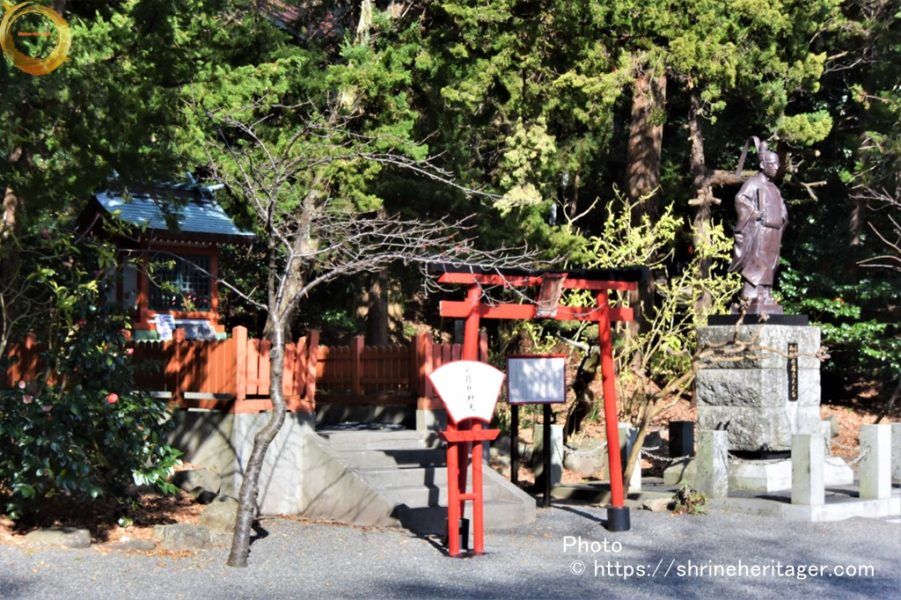
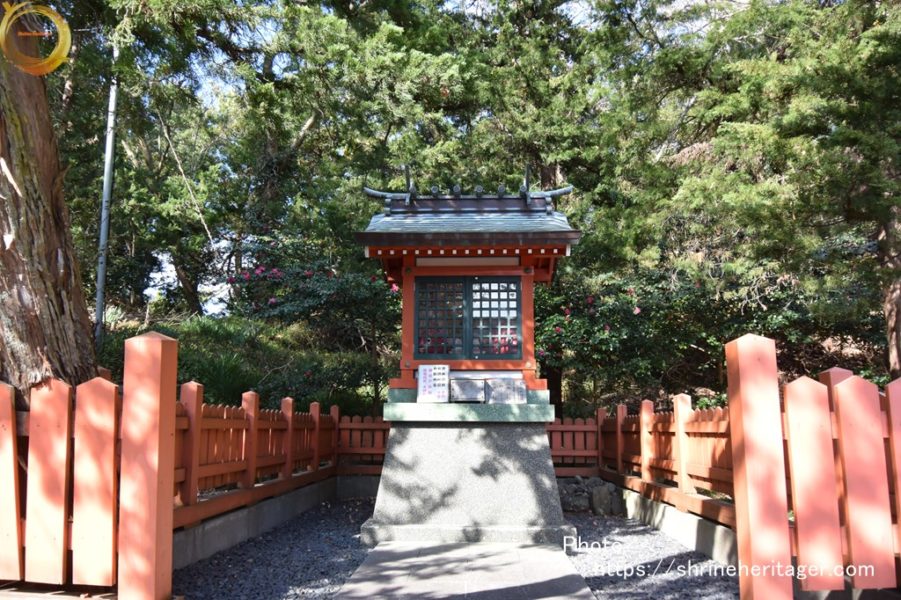
The approach which draws a slight arc is passed to the worship hall.
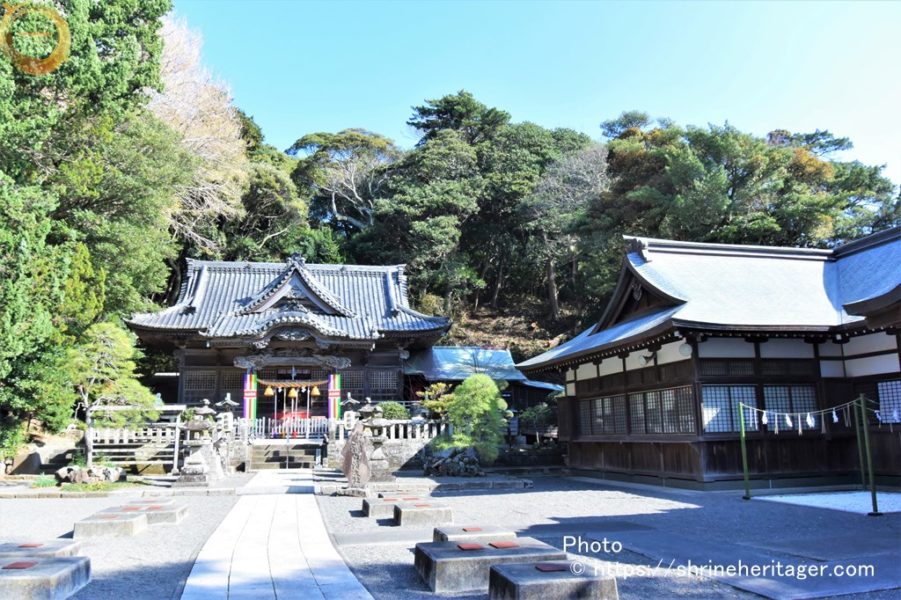
The name of the natural stone is "Izu Kuni Ichinomiya Shirahama Taisha".
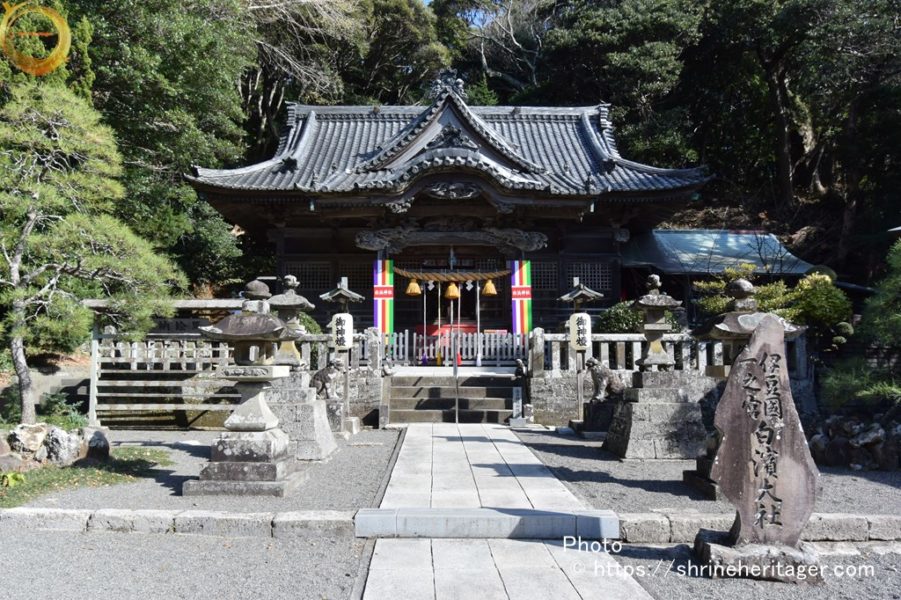
By the time of the worship hall, the stone lantern Komainu goes up the stone steps of about four steps at the end of the god light.
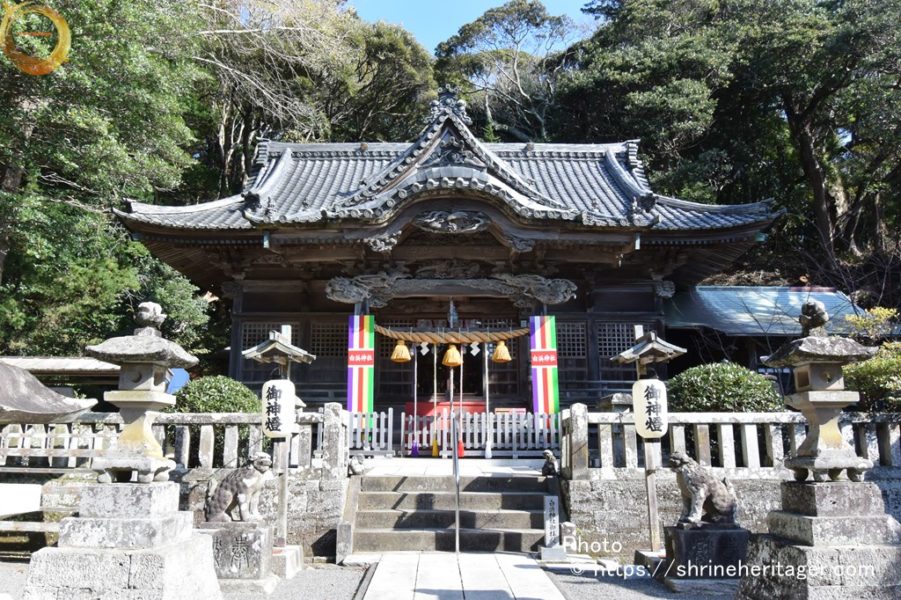
A small Komainu is set up to stick to the stone pillar of this stone step.
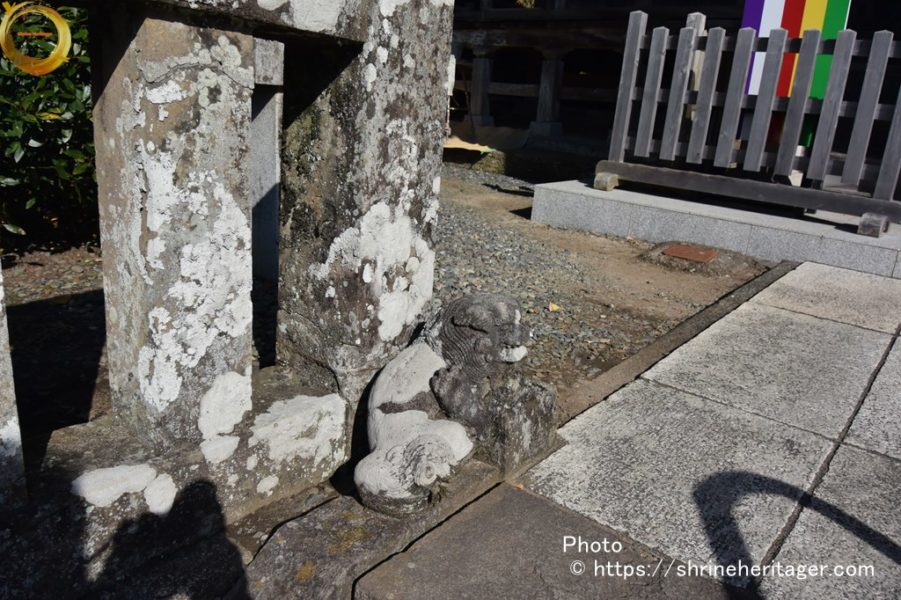
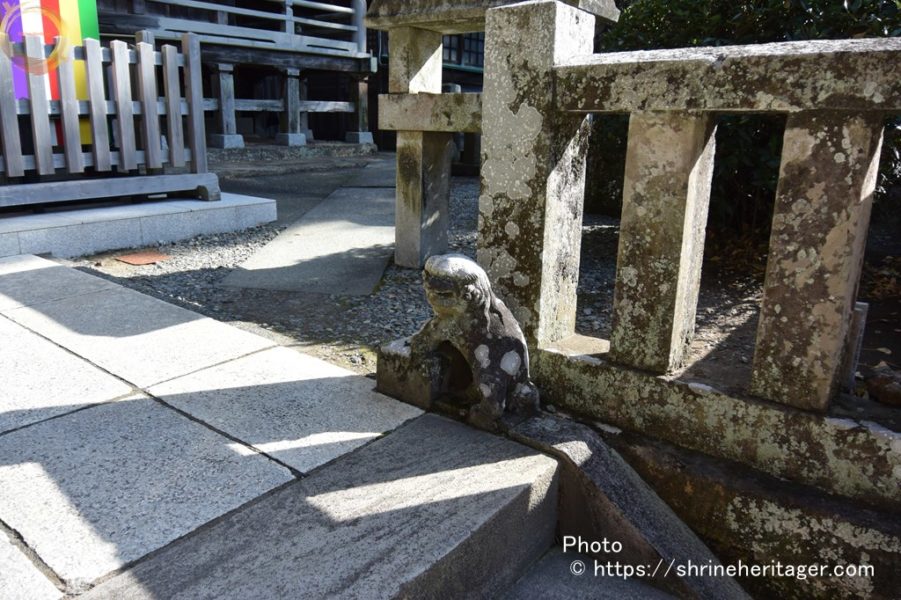
The sculpture of the shrine is delicate and elegant.
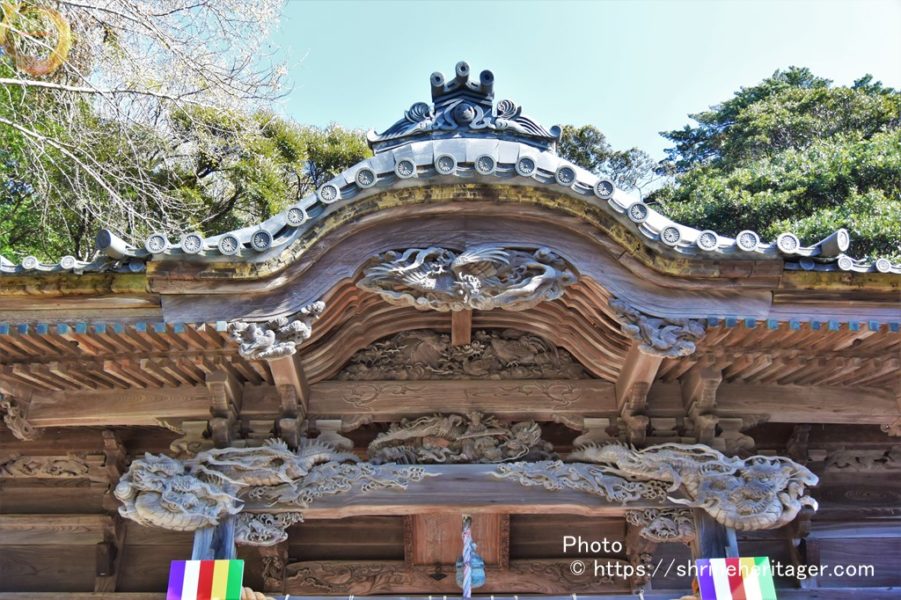
On the flat forehead is 「伊豆弎嶌神社 伊古奈比咩命神社」
Izu Mishima Shrine Ikonabi 咩Mei Shrine" is written in parallel.
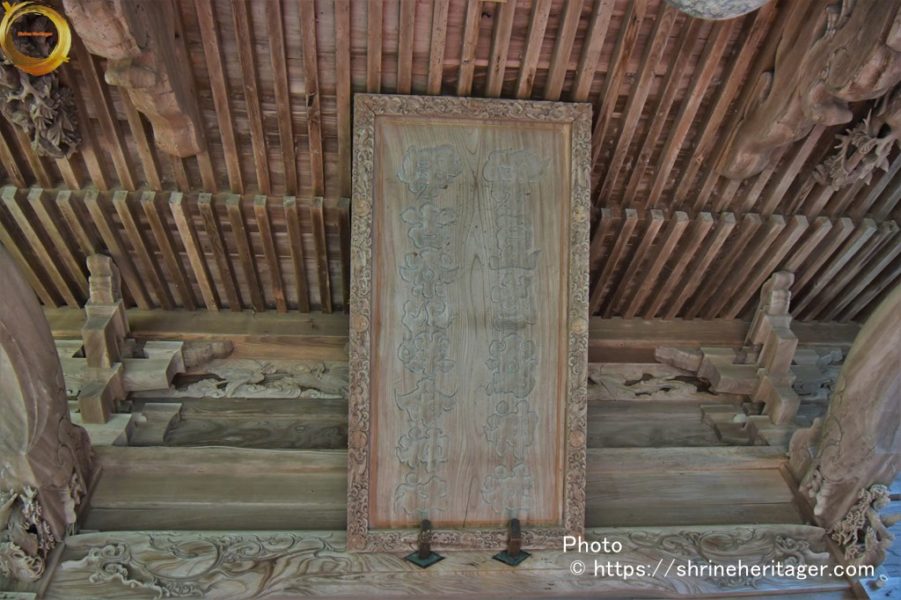
Give me a prayer.
When you reach the god of worship, where you worship God's power, pray with your hands together.
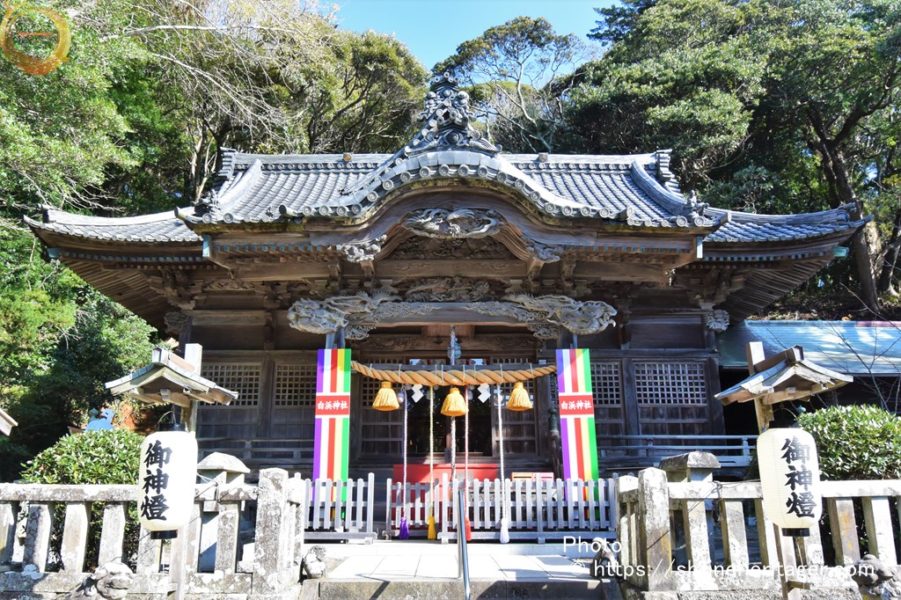
The main shrine stands on the hill at the rear of the shrine.
To the main hall, there is a approach that goes around from the left hand side of the precincts.
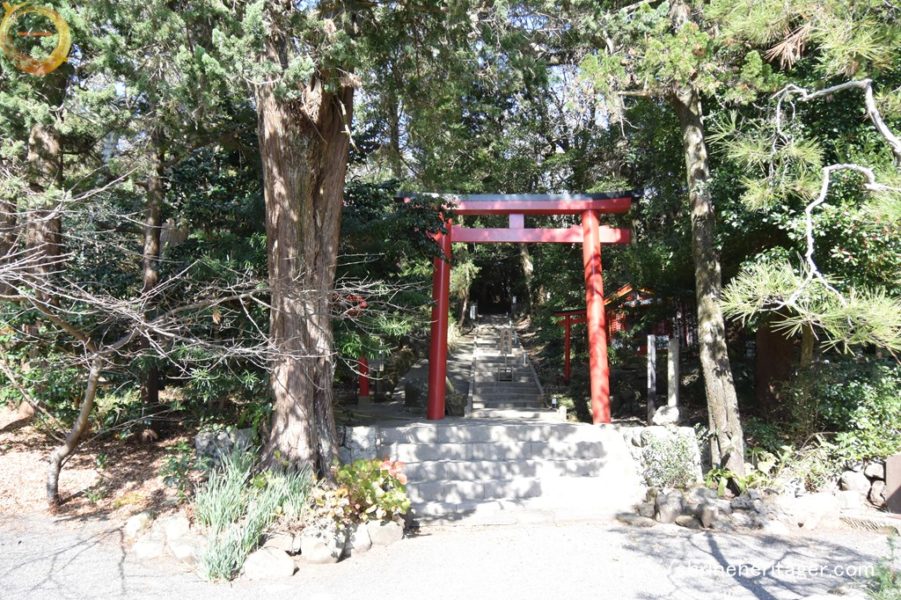
There is a red torii gate at the entrance of the approach to the main shrine, and a small vermillion torii gate stands on the left and right side of the road.
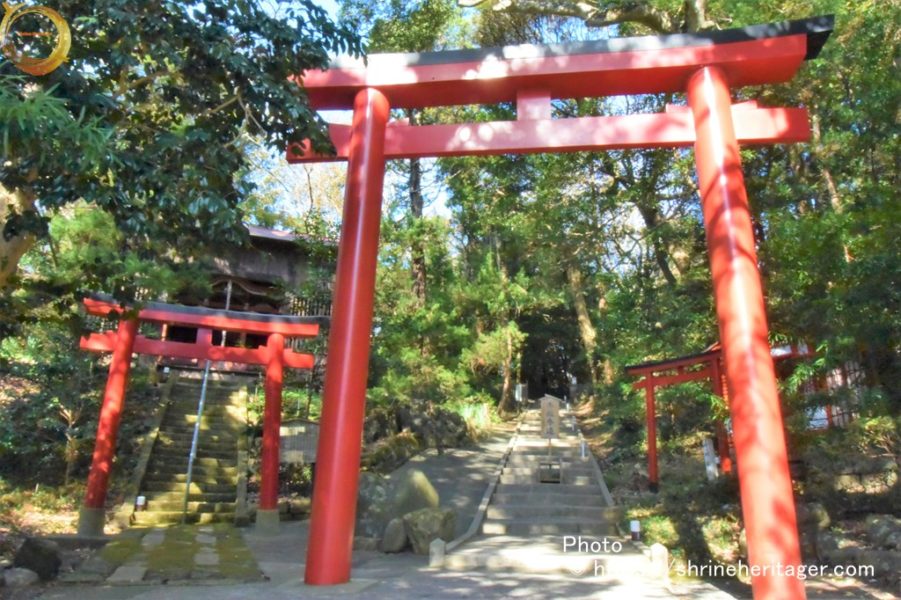
I'm going
to visit the shrine. On the right is Sunamura Inari Shrine.
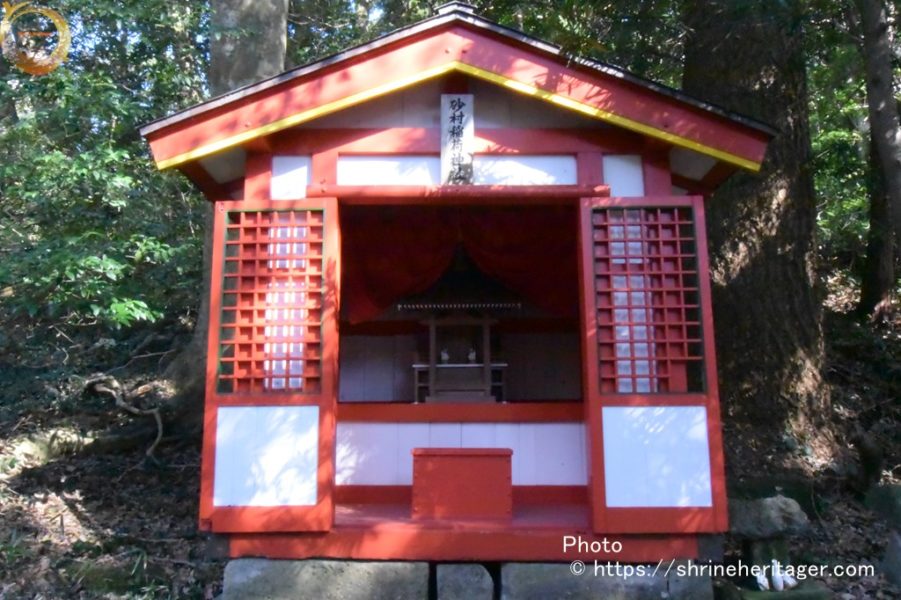
On the stairs on your left
・二十六社神社(nijuroku sha shrine)
(At the time of Sengu in 1921, 26 shrines were enshrined in one company.

In addition, if you go up the approach to the main shrine, the approach will curve to the right.
There is a shrine in the precincts on the left hand side of the approach, and it is a pilgrimage.
Eye shrine
《主》目大神
the description says that there was a big hump in the trunk, and there was a legend that eye disease would be cured if you washed your eyes with the water in it.
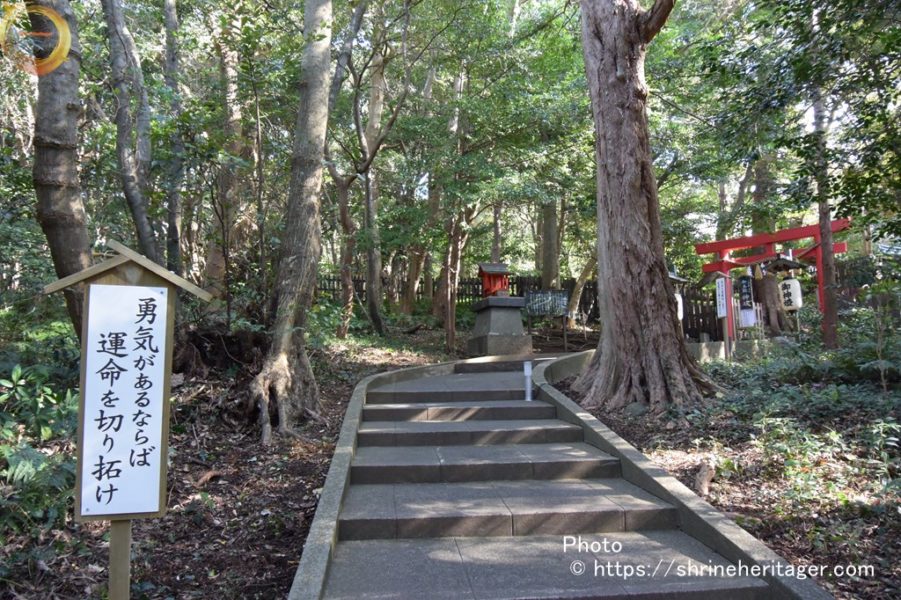
"God light" is put up on both sides of the approach here, and there is a tag "Gohonden Shinto area from this" in the center of the approach, and the ball wall is turned, and a scarlet torii gate is built.
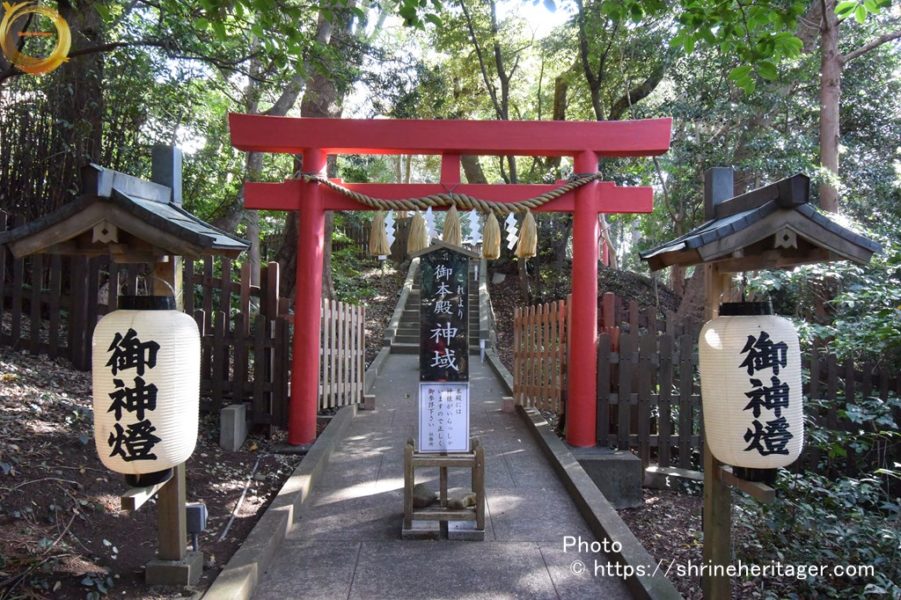
When you bow and pass through the torii gate, you will feel as
clean as if you were tense, and you will be in the sacred area correctly. In addition, there is a stand tag on the approach, and there is "The inside is a sacred area than this, and the entry other than the visitor is prohibited, and there is a company office"
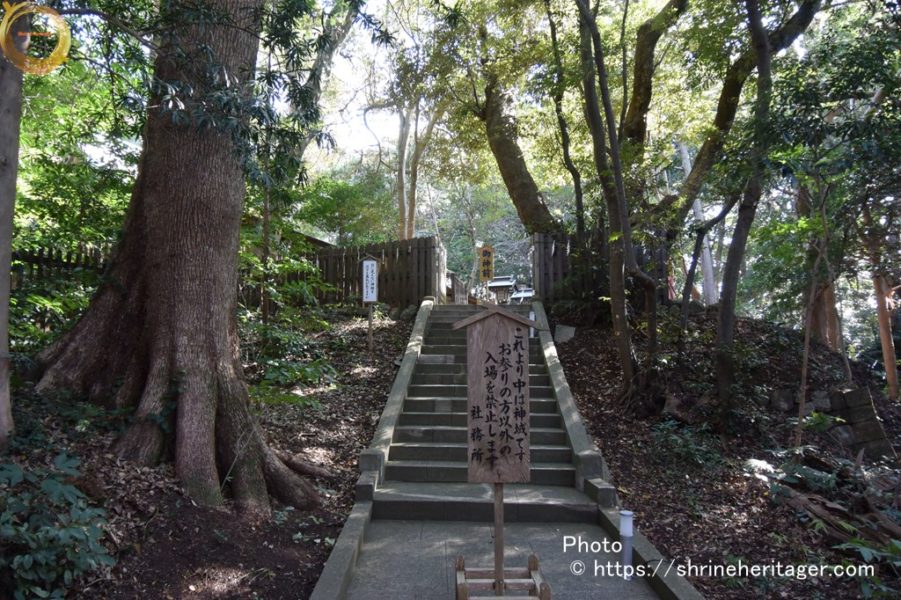
There is a stone step of about 20 steps ahead, and the inner ball wall is turned, and there is a tag of "God front" and the God gate comes into view.
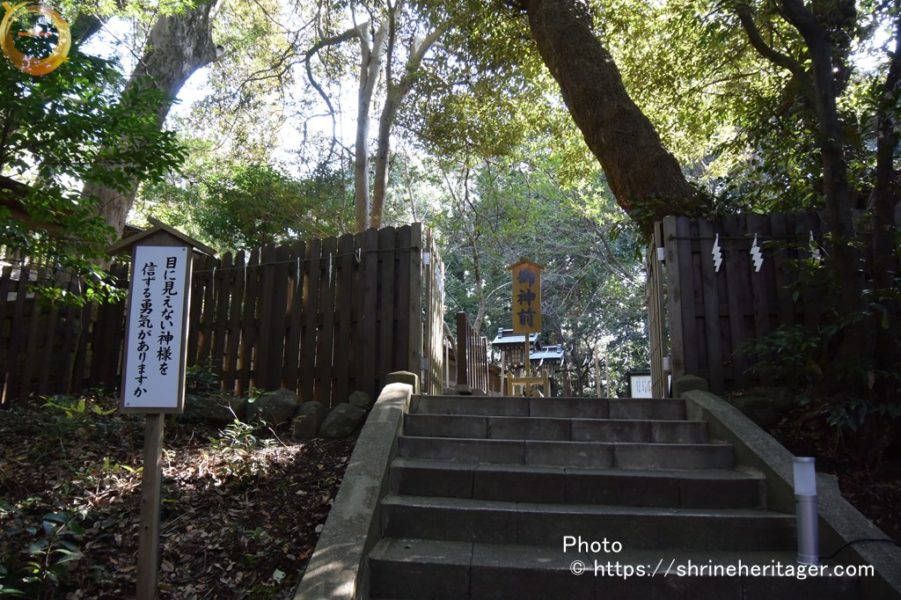
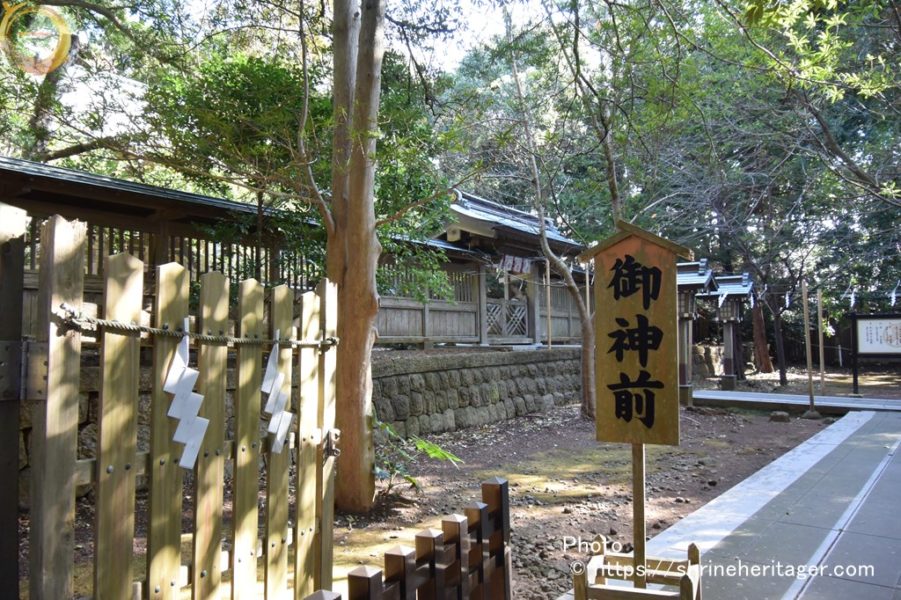
The approach that has gone up now is the one that a general visitor climbs from the left side, and there is a staircase which climbs straight from the worship hall to the main shrine, too, and this is blocked by the wall like the approach where "God" or the priest passes.
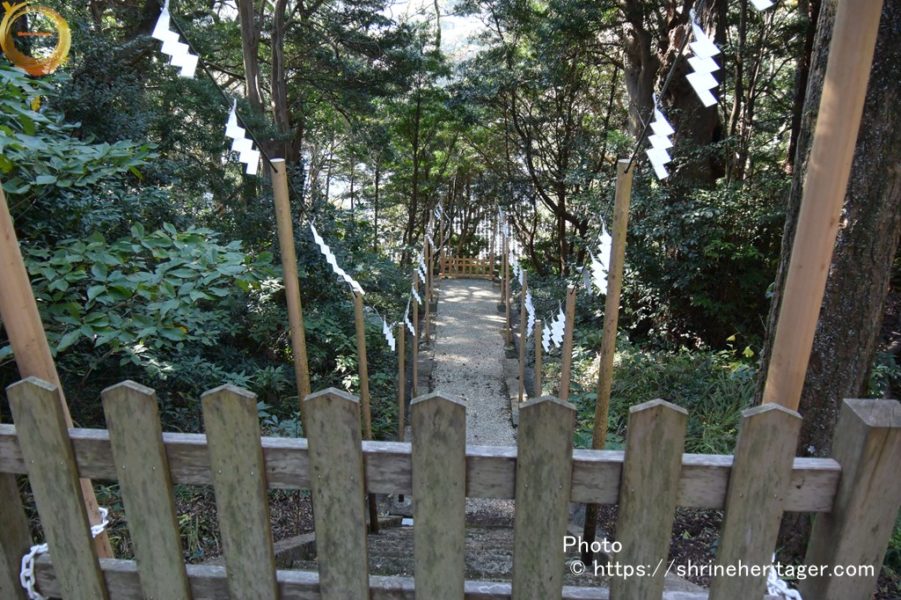
The main shrine of the ryuzo is built in the migaki in the precincts of the main shrine.
I'll go to
the gate. I'm sing a
lot of money. I wish you all the best. I pray with my hands together, hitting a high hand that can't reach the god of worship who bows and settles while wishing to be in accordance with your divine power.
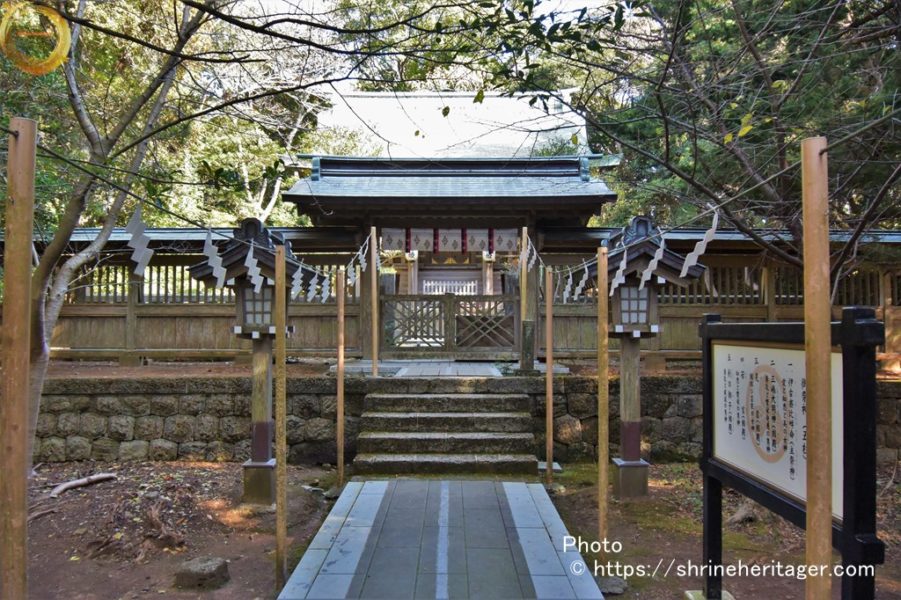
We'll go back to the approach, go through the torii gate, look back, and bow.
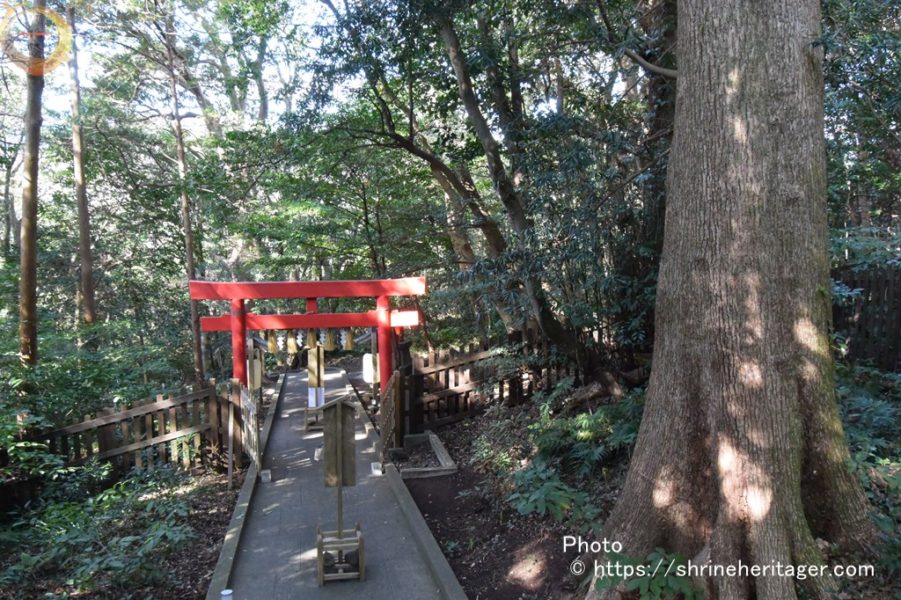
Return to the precincts below, stop at the Kamifu awarding office, receive a seal, etc.
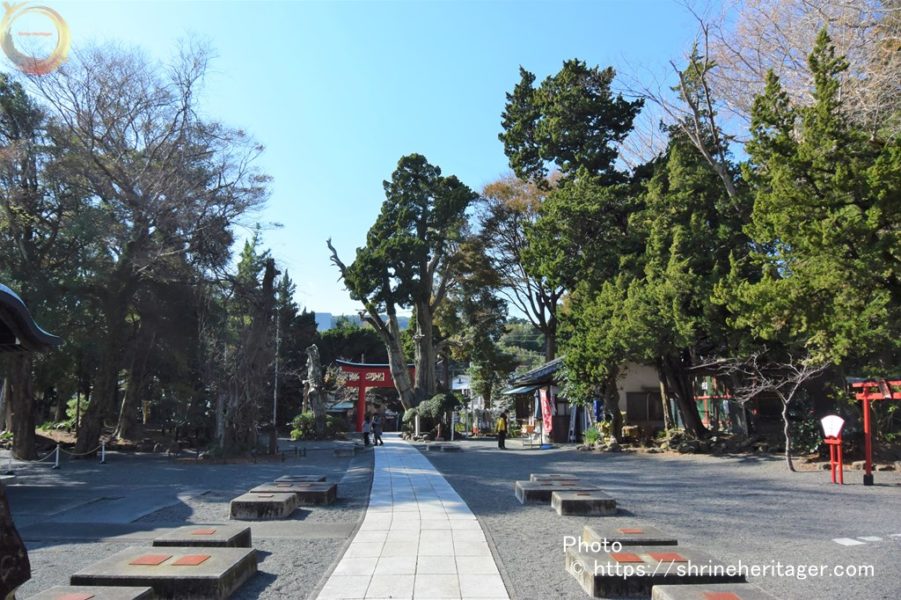
Leaving the precincts, head to the torii gate that stands toward the sea in the "Daimeijiniwa" behind the shrine.
When I go back to the back
You can see the hill "hitachiyama" on the Shirahama coast of the ancient ruins that enshrine the Izu Islands.
There is a very atmosphere of "Biyakushin" which stood white and withered.
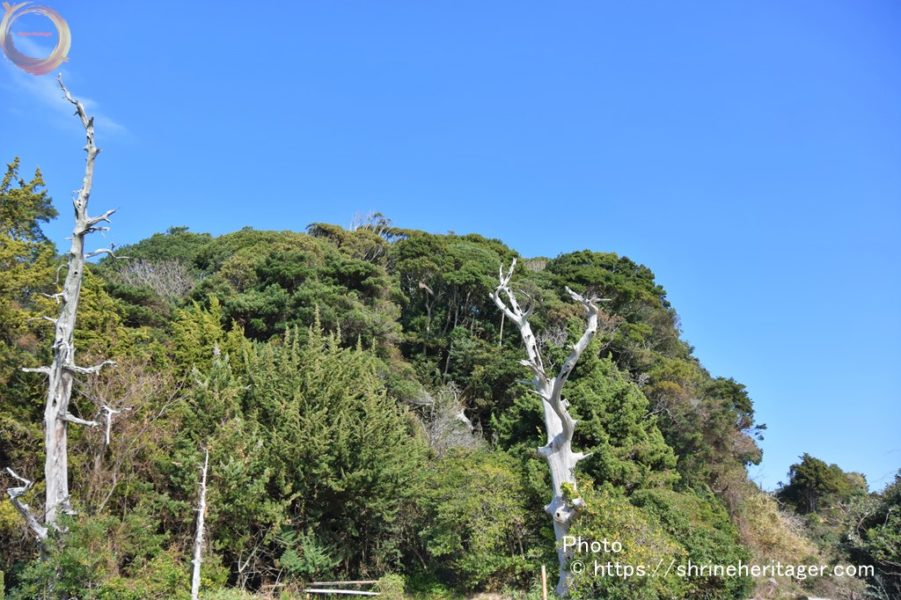
There is "Daimei shiniwa" at the end of the white sand, and the torii gate comes into view.
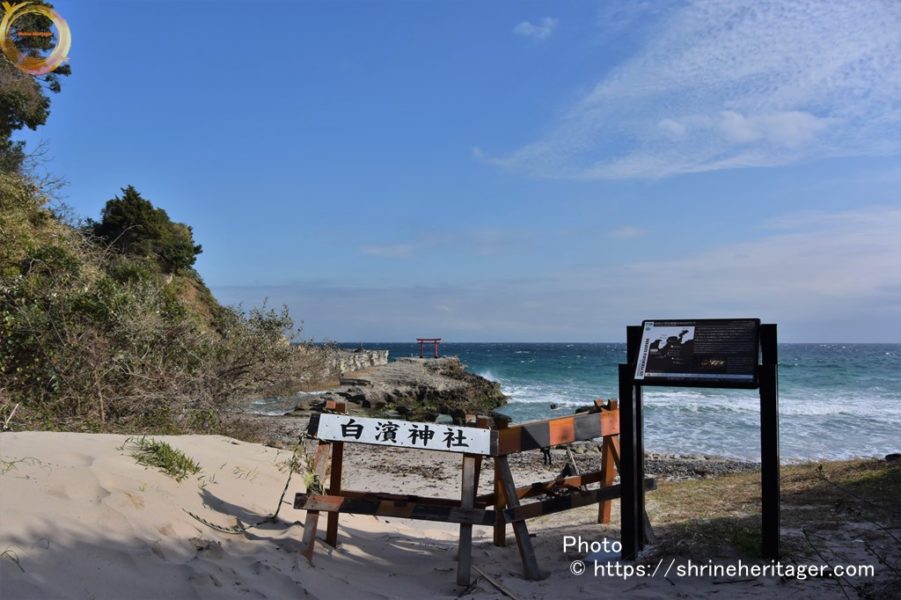
Because the tide is low, I walk on the coast "Daimei Shiniwa" is located in the center of Shirahama, and you can see Shirahama Ohama.
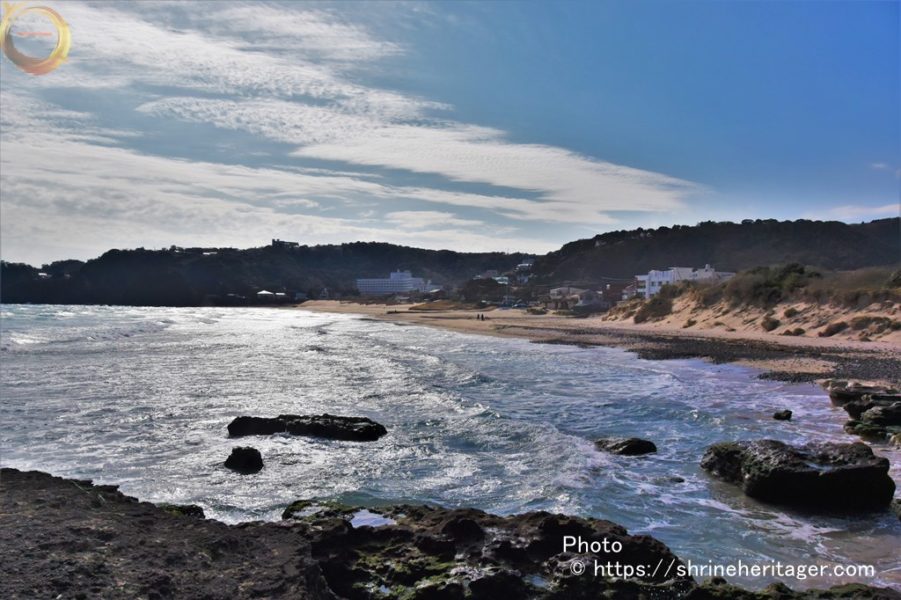
Proceed to the torii gate.
"hai" (90-degree bow) to the gods of the Izu Islands "Mishima-jin"

スポンサーリンク
神社の伝承(Old tales handed down to shrines)
I introduce the thing related to this shrine and the literature described.
According to the good luck of Shirahama Shrine, in the 6th year of Emperor Takayasu, "This god is transferred here from Miyakejima, and it is said that the god who came from the island was enshrined.
『日本後紀(nihon koki)』逸文 天長9年 (832) May 癸 (22nd) Article on the company site
The text is described in the description咩 of the time when Ikonami no mikoto shrine (ikonami no mikoto shrine) and Mishima Taisha (mishima taisha) were both sitting in Shirahama, Shimoda City, so we kept "Meishin" because they showed their divine majesty at this time.
Original
text 「伊豆国言上 三島神 伊古奈比咩神 二前預名神 此神塞深谷摧高巌 平造之地 二千町許 作神宮二院 池三処 神異之事 不可勝計 」Translation
"There was a word from Izu Province"
Take care of the two-way gods of Mishima-jin (Mishima Taisha) and Ikonahime no mikoto -- (Shimoda Shirahama Shrine)
This god is in the 摧 high of the deep valley that was blocked.
The land of Hirazo is permitted 2,000 towns, and the shinto shrine "Niin" system and the pond are three places to build.
The thing that God is different is a non-victory meter.
"Izu no Shimayaki"

It is an old story of the legend of Mishima Daimeijin and the God of Life.
From "The Old Story of Nankoku Izu" [Published by Shimoda Youth Chamberhttp://minwa.matsurino.com/index-2.htm
Summary
"A long time ago, The Great Gods of Fuji saw the ocean below and thought that if they burned down the country, they would have a great country, so he stuck one arm at the bottom of the sea.
Then the fire blew up from the sea, and the fire continued to catch up day and night, and the country "The country which did not go out" (Izu no Kuni) which protruded into the sea was burned.
Fuji's God was very satisfied with the beautiful scenery of a wonderful country.
As usual, I noticed a man from the bottom climbing a man who couldn't be seen.
"I'm a prince who came from Tengu (India), and i've been far from japan all the way to Japan, touching my father's life with my stepmother."
Fuji's Gods were talking about the man, but he thought he was a good man with a good way of speaking, a good attitude, and a good man.
"Then, what are you doing?"
Yes, I came because I want you to give me the land I live on.
Because this man who seemed to be honest liked, "Well, if it is, it is a land of Izu that I burned out, and I give the country of Izu to the country of Izu"The prince went to izu country as soon as he thanked him, and walked all over the place, and the more I walked, the more beautiful the scenery of Izu was, and the seafood was covered with the seafood.
The prince was completely concerned, and the more bald he was to build the country, the more he wanted a little more land, and he went to The Great God of Fuji.
"Ogami-sama, I want a little more land."
Mr. Ogami who was looking at the prince's country building
All right, all right, i'll give you a wide sea, and you can burn the island there, but before you do, go back to Tengu and tell your father' king what you've done.The prince set out from the beach in Shirahama, returned to his father's king, and talked about the country of Japan, and the father became happy, too.
The prince was so happy that he immediately set sail for the country of Japan.But on the way, the ship flowed to the country of Tango (Kyoto).
The prince, completely cought after the long voyage and storm, went to a house by the sea to eat and inn.
There was an old couple who were 320 years old and the children of Wakamiya Kengu who came from the country of Baidu (Korea) there.
When the prince tells the story of the land of Izu,
He said, "Take the three shrines, and you should be named Mishima Myojin."Myojin regained his energy, followed Minomiya and continued his boat trip, and finally arrived at Mihogasaki in Shirahama.
Myojin immediately came back to The Great God of Fuji, and the story of his father king was told, and he started to bake the island in the sea of Izu.The clever look was Hairyuo White Dragon King Aoryu, and many other dragon kings have been brought, Wakamiya called the thunder of fire, and Kengu called the thunder of the water and started burning the island.
When the dragon king put the three big stones which had been gotten from the god of Fuji to the sea, the thunder of the fire burned it, and the thunder of the water poured water into this and cooled it.
Then, the flame immediately knew the sky, and the sea was crowded, and one island was built in one night a day.The gods are the first island, so we named it Hatsushima.
On the second day, the island where the gods who bake the island gather, Jinshujima (Kanzu island)
The third is Oshima.
The fourth is a white island like the salt of the sea.
The fifth is Wakamiya Kengu Miyakejima to build a house of eyes.
Sixth, we built Mikura island to build myojin's brewery.
In the seventh, far south, the island off the coast.
Eighth, Kojima.
In the ninth, Wang's nose-like Wang's island
The tenth island was named Jujima.Mr. Ogami of Fuji was very pleased that the land of Izu flourished mainly in Mishima Myojin.
Wakamiya Kengu: I call the three gods of the eyes the three gods of Mishima Myojin.
It is said that it tried to call Shirahama Myojin again because it is easy to be crowded with Mishima Taisha.
According to good luck, "This god moved here from Miyakejima, and later moved to Mishima" The pioneer god of izu islands "Mishima-jin- Mishima-jin" and the god of the shrine "Ikonabi 咩 life" are enshrined the hill "Hitachiyama" on the Shirahama coast of the jinzachi area as a ritual site that enshrines the Izu Islands from ancient times咩.
"hai" (90-degree bow) at Ikonahime no mikoto Shrine (ikonamime no mikoto shrine)
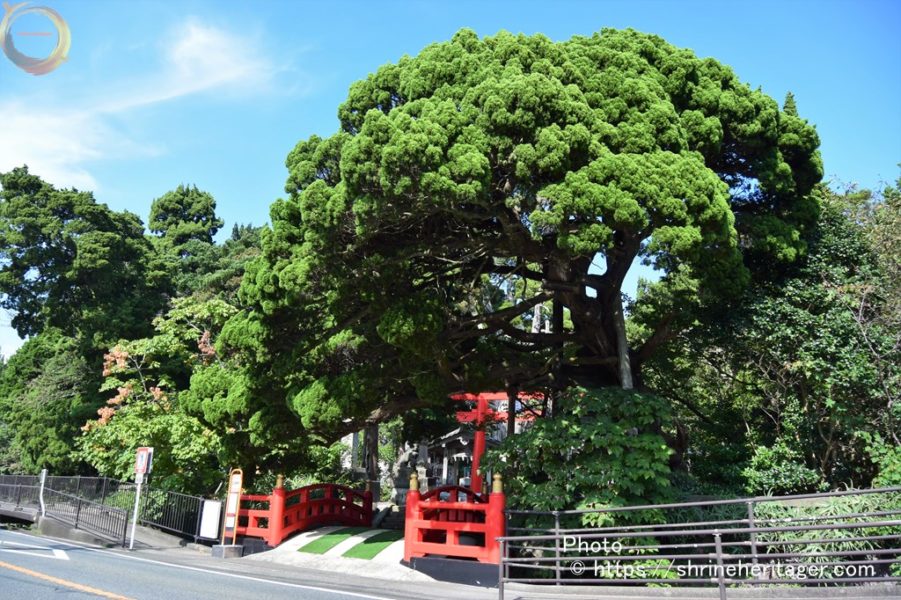
Please see the article of Mishima Taisha which enshrines Mishima god.
[st-card myclass="" id="11462" label="See together <{strong>

